Russian Olive
Information
Elaeagnus angustifolia - Elaeagnaceae Family
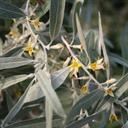
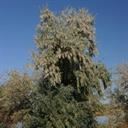
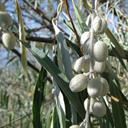
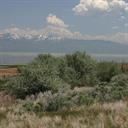
Identification
- Flowers: The fragrant flowers are 0.5-0.6 in. wide, silvery outside and yellow within.
- Seeds: The fruit are 0.4 in. long, yellow, and almost completely covered by densely silver scales. The fruit contain one large seed.
- Leaves: The leaves are simple, alternate and 1-4 in. long and have silver scales on both sides.
- Flowering Time: Flowers appear in May to June.
- Life cycle: Russian olive is a shrub or small tree that can grow to 35 ft. The young branches are silvery while the older branches are brown. They are occasionally thorny and covered with scales.
Impacts
- Russian olive grows especially well in riparian situations, but can also be found growing along roads and highways where it was once planted in the late 1800’s. It has nitrogen fixing nodules and has a high drought and salt tolerance.
- It is especially proficient in out-competing native plants after a flood, and can threaten large native trees, such as cottonwoods, through its ability to form dense stands.
- Despite its invasive properties, Russian olive is still being recommended and sold to landowners for horticulture, wildlife habitats, and as windbreaks. This has likely contributed to the current widespread occurrence of Russian olive in the U.S.
Control
Most effective control methods
- Russian olive seedlings and sprouts can easily be hand-pulled when the soil is moist.
- Once it becomes firmly established, the most effective control method is the cut-stump herbicide treatment. This method is both labor-intensive and expensive, but can be highly effective, and is more target-specific than foliar applications of herbicide.
- Most non-chemical methods for the control of large Russian olive stands are not effective.
Large Images
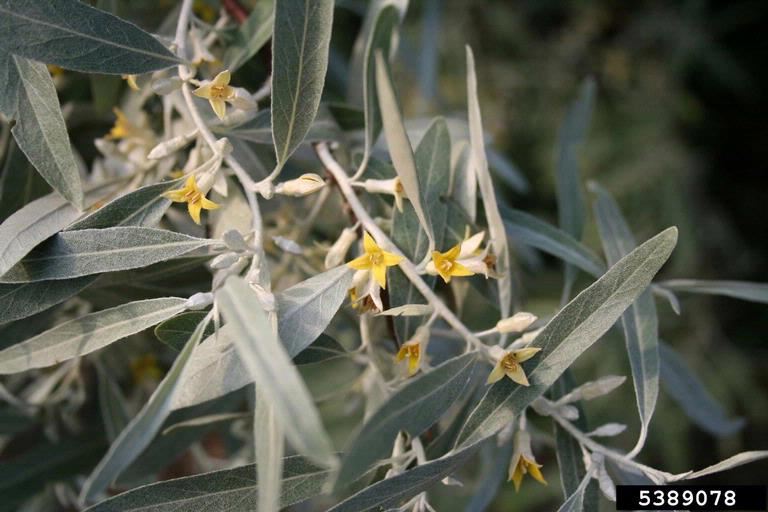
Russian olive: flowers and foliage
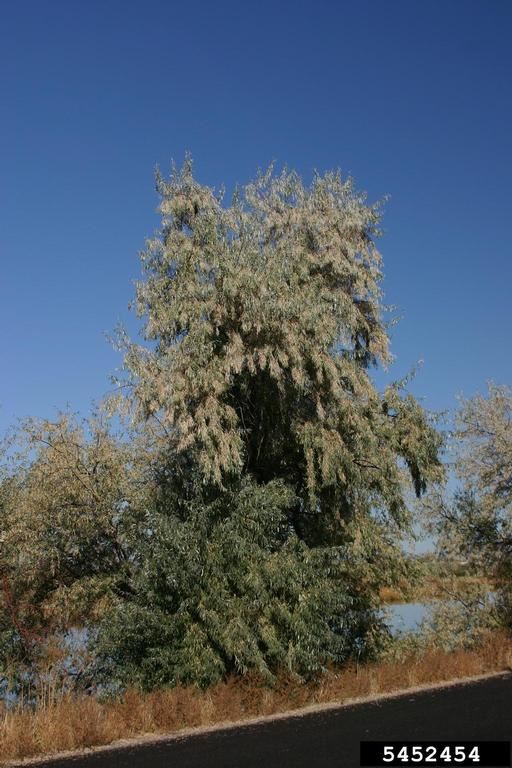
Russian olive
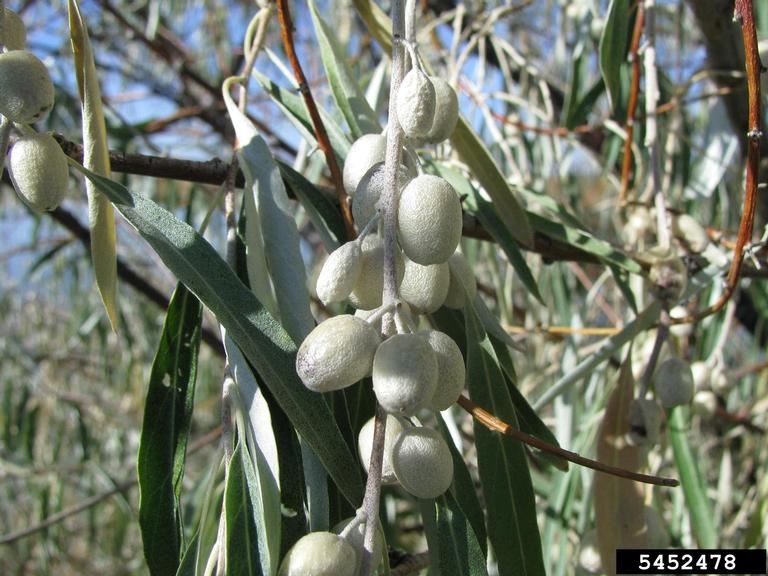
Russian olive: fruit
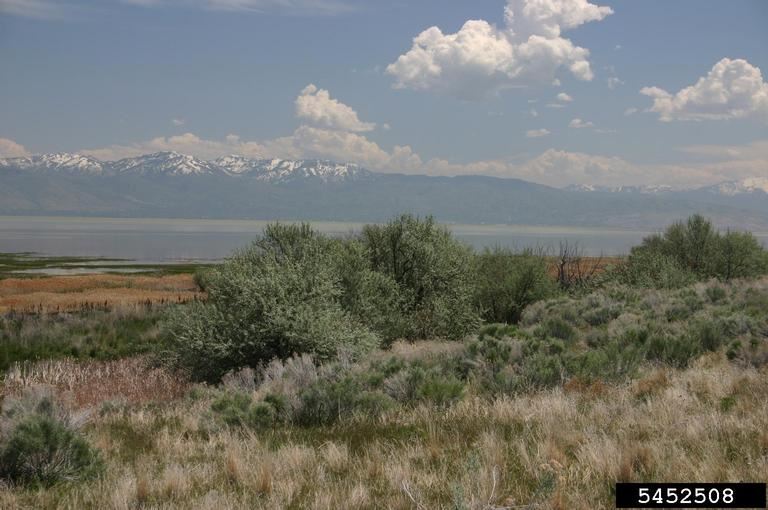
Russian olive: infestation

Russian olive: tree
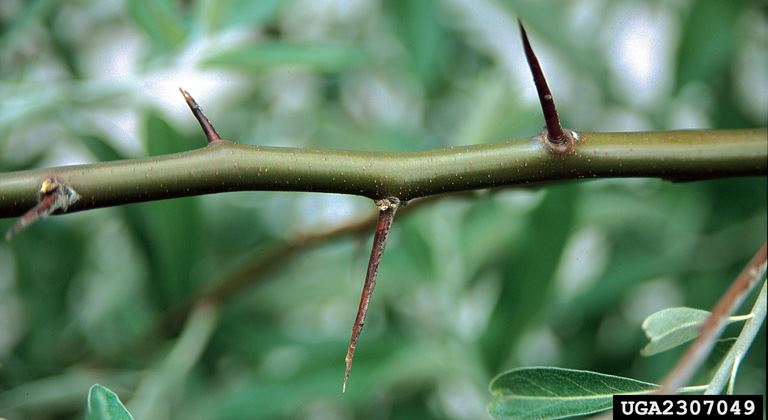
Russian olive: stem with thorns
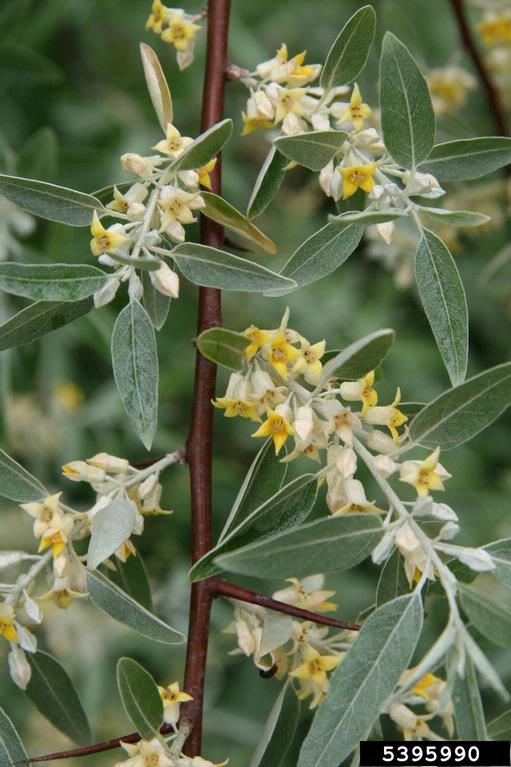
Russian olive: flowers and foliage
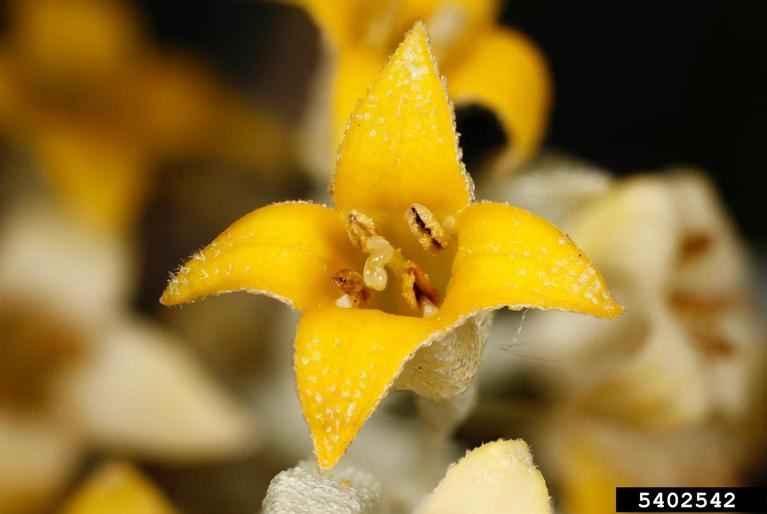
Russian olive: flower
Resources
-
References
DiTomaso, J.M., G.B. Kyser et al. (2013). Weed Control in Natural Areas in the Western United States [PDF file]. Weed Research and Information Center, University of California. Retrieved from https://wric.ucdavis.edu/information/natural-areas/wr_E/Elaeagnus.pdf View PDF
Duncan, C. (2018, February 23). Saltcedar and Russian olive management. Retrieved from https://www.techlinenews.com/articles/2012/12/30/saltcedar-and-russian-olive-management
Duncan, C. (2018, May 1). Herbicide application timing is key to controlling Russian olive regrowth. Retrieved from https://www.techlinenews.com/articles/2014/herbicide-application-timing-is-key-to-controlling-russian-olive-regrowth
Invasive Species Compendium. (2018, June 20). Elaeagnus angustifolia (Russian olive). Retrieved from https://www.cabi.org/isc/datasheet/20717
Patterson, R.K., & Worwood, D.R. (2014, January). Russian olive control—cut stump treatment [PDF file]. Retrieved from https://digitalcommons.usu.edu/cgi/viewcontent.cgi?referer=https://www.google.com/&httpsredir=1&article=1797&context=extension_curall
Tu, M. (2003, July). Element stewardship abstract for Elaeagnus angustifolia L. [PDF file]. Retrieved from https://www.invasive.org/gist/esadocs/documnts/elaeang.pdf View PDF
United States Department of Agriculture. (2014, September). Field guide for managing Russian olive in the Southwest [PDF file]. Retrieved from https://www.fs.usda.gov/Internet/FSE_DOCUMENTS/stelprdb5410126.pdf View PDF
Zouhar, Kris. (2005). SPECIES: Elaeagnus angustifolia. Fire Effects Information System. Retrieved from https://www.fs.fed.us/database/feis/plants/tree/elaang/all.html




